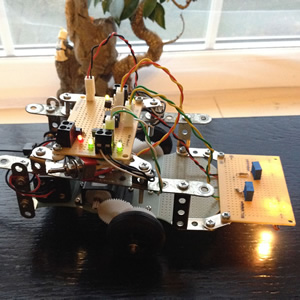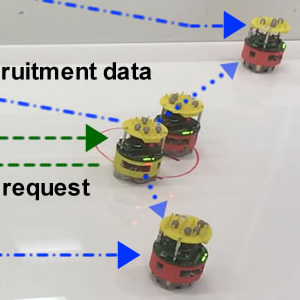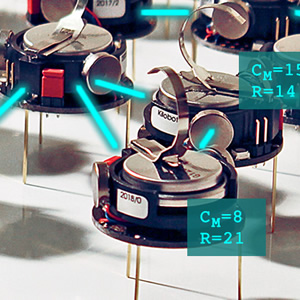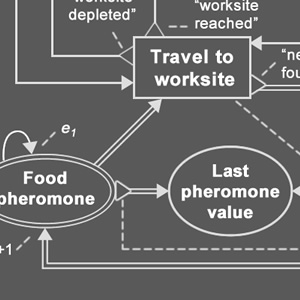- Multi-agent systems
- Designing Robot Swarms
- Robustness in Foraging E-puck Swarms Through Recruitment
- Information Flow Regulation in Preferentially Foraging Swarms
- The Information-Cost-Reward framework for understanding robot swarm foraging
- Behaviour-Data Relations Modelling Language For Multi-Robot Control Algorithms
- Task Allocation in Foraging Robot Swarms
- Information Flow Principles for Plasticity in Robot Swarms
- Understanding the Role of Recruitment in Robot Foraging
- Controlling Ant-Based Construction
- Boid Game-Playing through Randomised Movement
- Neural networks
- Robots
- Essays
[Research]
I am a Research Associate in Applied Mathematics and Computer Science at the University of Bristol. My research area is unsupervised learning with self-organised neural networks. Previously, I was a Post-doctoral Research Fellow at the University of Southampton and worked at the Bristol Robotics Laboratory in the area of swarm robotics. My wider research interests include the emergence of intelligence in embodied systems and human-robot interaction.
 This project looks at the challenges involved in modeling, understanding and designing of...
This project looks at the challenges involved in modeling, understanding and designing of...
 Linee is a line following robot that instead of being programmed, uses a fully analogue controller...
Linee is a line following robot that instead of being programmed, uses a fully analogue controller...
 Swarms of five e-puck robots are used in a semi-virtual environment, facilitated by the VICON...
Swarms of five e-puck robots are used in a semi-virtual environment, facilitated by the VICON...
 Attributes of ultrastability as an adaption mechanism in a hormone-modulated neural robot...
Attributes of ultrastability as an adaption mechanism in a hormone-modulated neural robot...
 The Information-Cost-Reward (ICR) framework relates the way in which robots obtain and share...
The Information-Cost-Reward (ICR) framework relates the way in which robots obtain and share...
 Behaviour-Data Relations Modeling Language (BDRML) explicitely represents behaviours and data that...
Behaviour-Data Relations Modeling Language (BDRML) explicitely represents behaviours and data that...
Selected research projects
Designing Robot Swarms
 This project looks at the challenges involved in modeling, understanding and designing of...
This project looks at the challenges involved in modeling, understanding and designing of...
Linee the line follower
 Linee is a line following robot that instead of being programmed, uses a fully analogue controller...
Linee is a line following robot that instead of being programmed, uses a fully analogue controller...
Robustness in Foraging E-puck Swarms Through Recruitment
 Swarms of five e-puck robots are used in a semi-virtual environment, facilitated by the VICON...
Swarms of five e-puck robots are used in a semi-virtual environment, facilitated by the VICON...
Ultrastable Neuroendocrine Robot Controller
 Attributes of ultrastability as an adaption mechanism in a hormone-modulated neural robot...
Attributes of ultrastability as an adaption mechanism in a hormone-modulated neural robot...
The Information-Cost-Reward framework for understanding robot swarm foraging
 The Information-Cost-Reward (ICR) framework relates the way in which robots obtain and share...
The Information-Cost-Reward (ICR) framework relates the way in which robots obtain and share...
Behaviour-Data Relations Modelling Language For Multi-Robot Control Algorithms
 Behaviour-Data Relations Modeling Language (BDRML) explicitely represents behaviours and data that...
Behaviour-Data Relations Modeling Language (BDRML) explicitely represents behaviours and data that...










